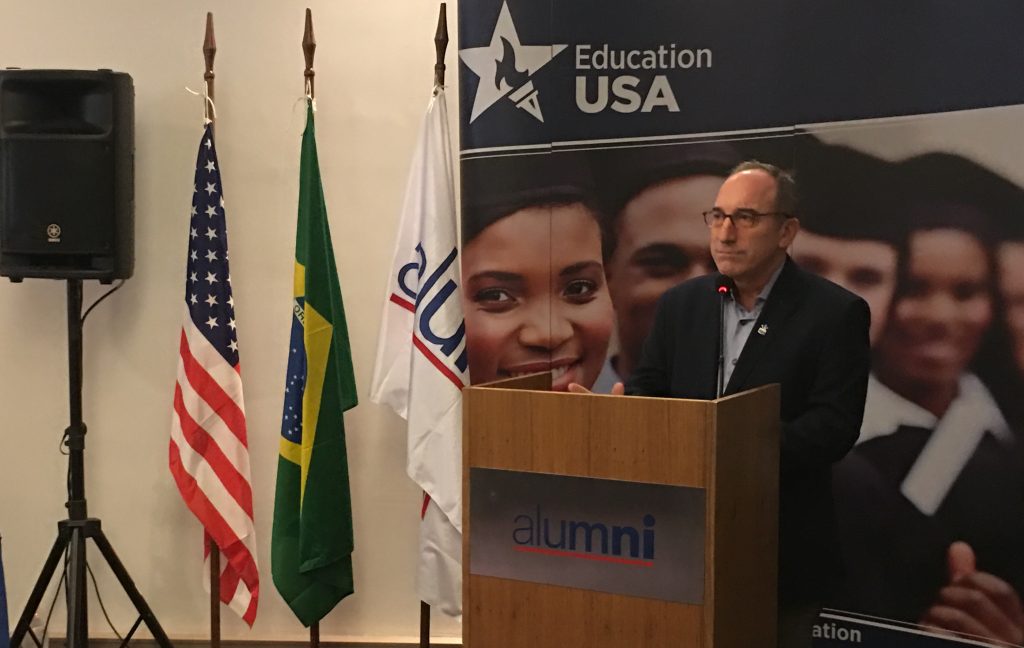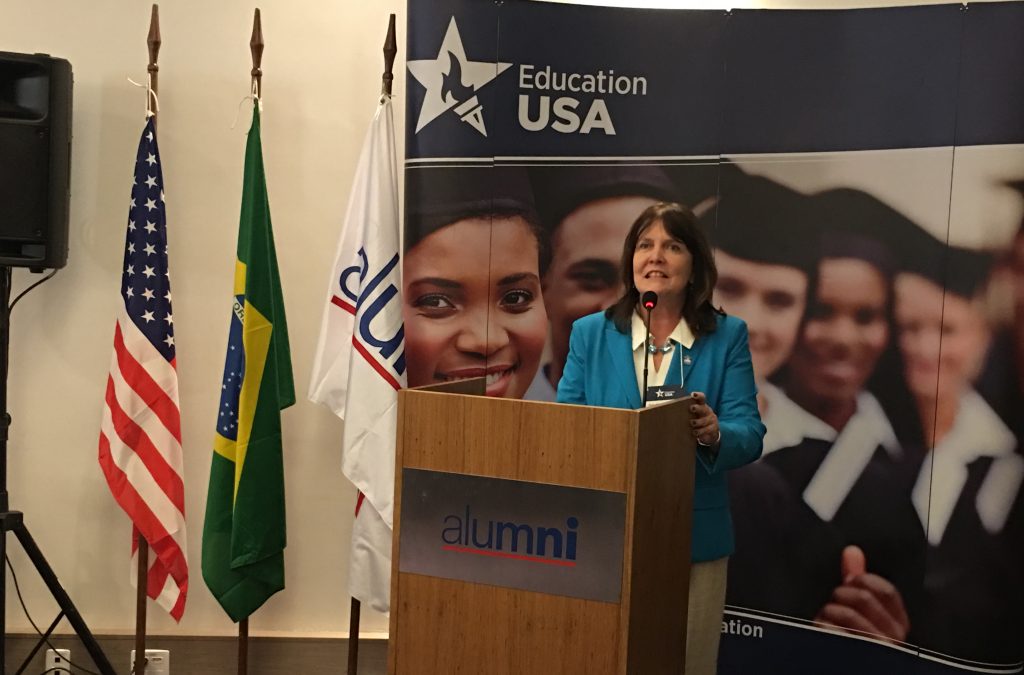Went to the São Paulo EducationUSA today. We suffered a little when Science w/o Borders went away, but now interest in studying in the USA is coming back. I don’t recall the number that they said had registered, but the place was packed.
Education was the big thing when I was PAO in Brazil. I made it our top priority, so that we could take advantage of the Science w/o Borders program and we ended up getting more than 30,000 Brazilians to the USA in that program. This added something like $1.2 billion to the American education economy and had immeasurable benefit to the lives of those involved and scholarship in general. I do not regret but am still annoyed that the State Department inspectors marked me down for putting too much emphasis on that one aspect of our work. Please excuse my complaint, but I guess it still rankles a bit. They had the right to write that report and I had the right to think they were full of crap.
Science w/o Borders was a once-in-a-lifetime opportunity. It was well worth it to “unbalance” the program for a short time. It was like a guy digging for silver who finds gold. You don’t just ignore it because it was not on the agenda. Well, that is my complaint. My Ambassador Tom Shannon and others supported me, so the bad report did me no lasting harm and I am convinced that pushing for that education did some lasting good.
My old friend and colleague Rita Moriconi was at the fair. She had/has the education portfolio for Brazil, Paraguay, Chile and Argentina and provides the power that keeps these kinds of things running. The São Paulo fair is sponsored by the local Binational Center – Alumni. They have been sponsoring for more than fifteen years.
Our new Consul-General Adam Shub gave welcoming remarks. It is good to have high level support.
To recycle a little text from last time I did a fair – Rita Moriconi can correct me if I am wrong – EducationUSA fairs are self-supporting, i.e. the schools and others who take part pay the full cost. Presumably participants think that the return is worth it. Each Brazilian student brings in around $55,000 in direct benefits into the American economy for each year they are studying (not counting all the intangibles and long term), so if a school attracts only one or two it more than pays for the effort. The USG outlay is only for some incidentals and our time, which is free to the USG, since we get paid the same anyway.whether we work on Saturday or not.




